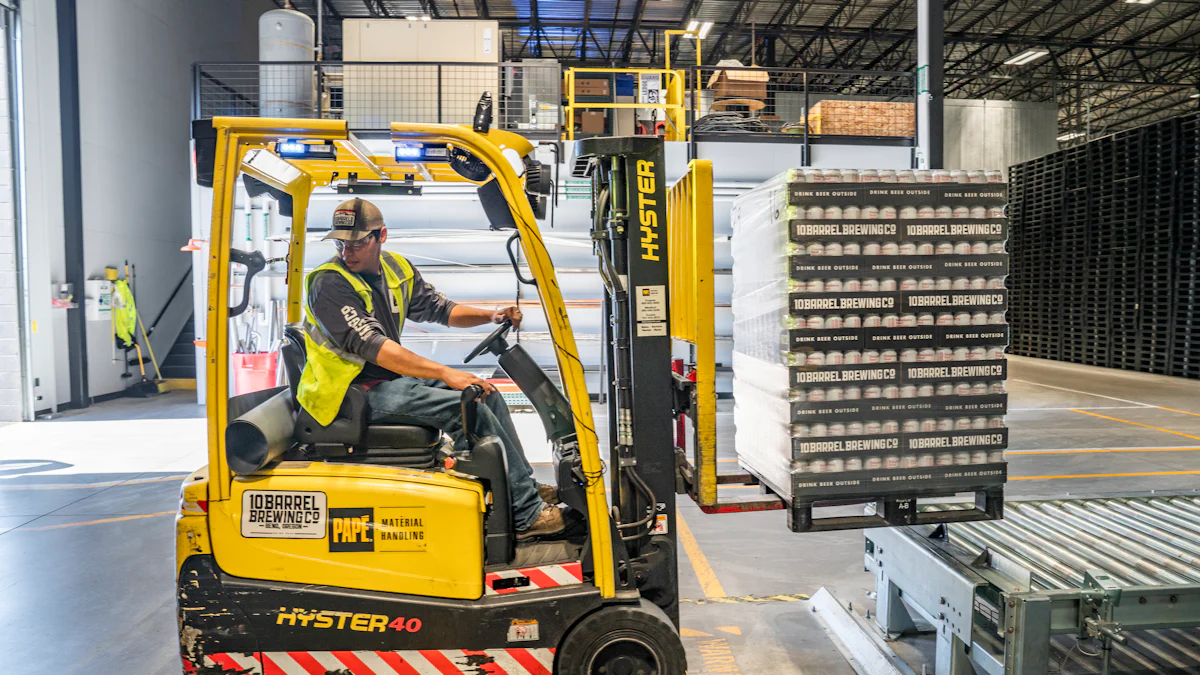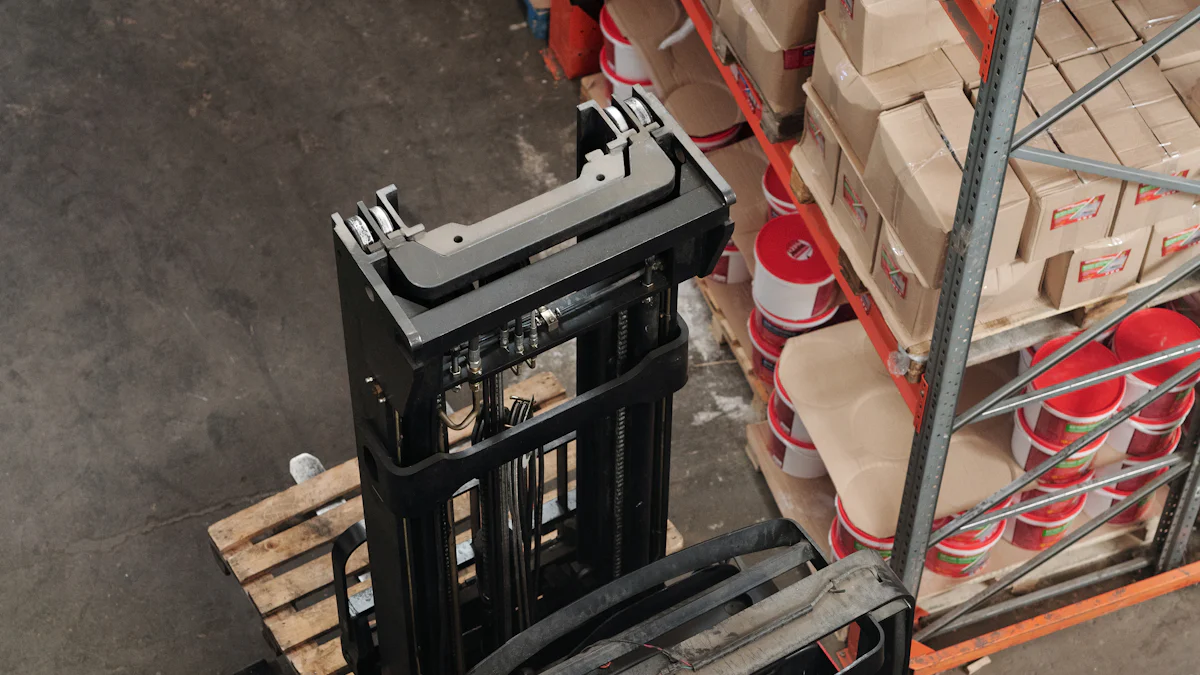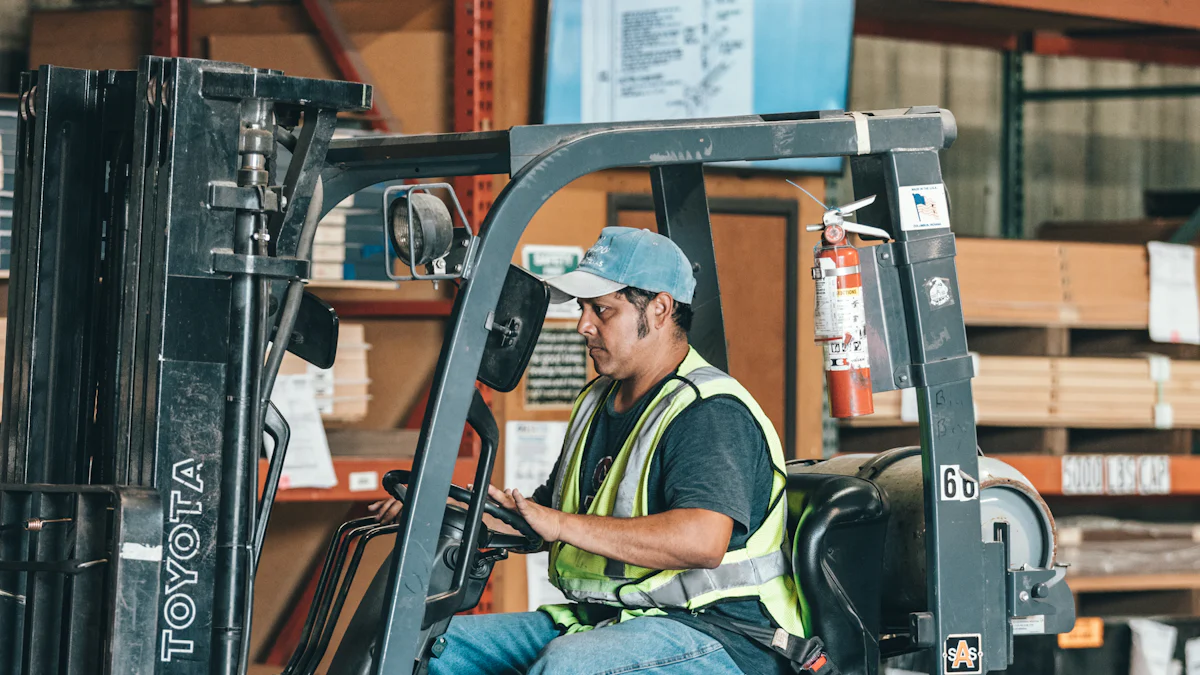
In the realm of material handling equipment, efficiency is paramount. Maneuverability within warehouses can make or break operational success. Straddle stackers and pallet jacks stand out as versatile tools in this domain. This blog aims to delve into a crucial aspect: understanding pivot points. By grasping where these machines pivot, operators can enhance stability and optimize workflow.
Understanding Straddle Stackers

Definition and Functionality
Straddle stackers are versatile material handling machines designed to lift and transport heavy loads efficiently. These equipment pieces feature outriggers outside of the forks, enhancing balance and lateral stability during operations. The unique design of straddle stackers allows for lifting loads to significant heights, reaching up to 189 inches in narrow spaces where traditional forklifts may not be suitable.
What are straddle stackers?
- Straddle Pallet Stackers: Equipped with outriggers for balance and lateral stability.
- Walkie Straddle Stacker: Features outrigger arms to prevent tipping over when lifting loads.
- Counterbalanced Walkie Stacker: Utilizes counterweight for stability and can lift loads over 100 inches.
Key features and components
- Pantographic Fork Carriage: Enables extended reach capabilities.
- Heavy Chassis: Provides durability and stability.
- Lifting Mast: Allows for lifting loads to varying heights.
- Outriggers: Ensure balance and prevent tip-overs during operation.
Types of Straddle Stackers
Straddle stackers come in various types tailored to specific operational needs.
Manual straddle stackers
- Ideal for manual lifting tasks in smaller warehouses or storage facilities.
- Suitable for low to mid-level selective racking applications.
Electric straddle stackers
- Powered by electricity for enhanced efficiency and reduced manual labor.
- Capable of lifting heavier loads to greater heights compared to manual counterparts.
Applications of Straddle Stackers
Straddle stackers find extensive use across different industries due to their versatility and functionality.
Common use cases
- Warehousing: Efficiently moving palletized goods within warehouse facilities.
- Manufacturing: Handling materials on production lines with precision.
- Retail: Stock replenishment and organization in retail environments.
Advantages in specific industries
- Logistics: Streamlining supply chain operations with quick load transportation.
- Food Industry: Ensuring safe handling of perishable goods with precise control.
- Automotive Sector: Facilitating assembly line processes with reliable material movement.
Exploring Pallet Jacks
Definition and Functionality
Pallet jacks are essential tools in material handling, designed for efficiently moving heavy loads within warehouses and industrial settings. These machines operate by lifting pallets off the ground using a hydraulic system, allowing for easy transportation across short distances.
What are pallet jacks?
- Weighing Scale Pallet Jack: This specialized type displays the weight of the load being moved, providing precise measurements crucial for loading bays and factory floors.
- All-Terrain Pallet Jack: With a load capacity of 2000 – 2500 lbs, this jack is versatile for various surfaces like nurseries, gravel pits, and construction sites due to its robust design and large wheels.
Key features and components
- Tubular Frame Design: Ensures even distribution of weight for stability.
- Three-position Handle: Offers flexibility in handling operations.
- Hydraulic System: Facilitates smooth lifting and lowering of pallets.
- Large Wheels: Enable movement over different terrains with ease.
Types of Pallet Jacks
Pallet jacks come in diverse types catering to specific needs based on load capacities and operational requirements.
Manual pallet jacks
- Simple yet effective tools with a load capacity of around 5500 lbs.
- Operated by pumping the handle to lift pallets off the ground manually.
Electric pallet jacks
- Enhanced efficiency through electric motors assisting in lifting heavy loads.
- Available in various load capacities up to 8000 lbs for increased productivity.
Applications of Pallet Jacks
The versatility of pallet jacks makes them indispensable across various industries, optimizing material handling processes efficiently.
Common use cases
- Warehousing: Transporting goods within warehouse facilities swiftly.
- Retail: Facilitating stock movement and organization in retail environments effectively.
Advantages in specific industries
- Construction: Handling materials at construction sites with ease due to their maneuverability.
- Agriculture: Efficiently moving supplies at farms or nurseries without hassle.
Pivot Points in Material Handling Equipment

Importance of Pivot Points
Enhancing maneuverability and reducing operational space are critical aspects in the design of straddle stackers and pallet jacks. By strategically placing the pivot points at the rear axle, these machines can navigate through tight spaces with ease while maintaining stability during operation.
How Straddle Stackers Pivot
Mechanisms involved
- Steering System: Utilizes a combination of hydraulic cylinders and a steering wheel to control movement.
- Rear Axle Pivot: The pivotal point between the rear wheels allows for smooth turns and precise positioning.
- Outriggers Adjustment: Ensures proper weight distribution for enhanced balance.
Practical examples
- When navigating narrow aisles, a straddle stacker smoothly pivots around its rear axle, allowing operators to maneuver efficiently without compromising safety.
- In crowded warehouse spaces, the strategic placement of the pivot point enables precise movements when stacking pallets at varying heights.
How Pallet Jacks Pivot
Mechanisms involved
- Tiller Handle: Acts as a steering mechanism by directing the front wheels for accurate navigation.
- Axle Placement: Positioned at the rear end, enabling controlled turns and straightforward handling.
- Wheel Design: Large diameter wheels facilitate smooth movement across different surfaces.
Practical examples
- Operating a pallet jack involves leveraging the tiller handle to pivot effortlessly, ensuring optimal control over load transportation.
- The well-placed pivot point on a pallet jack’s axle allows operators to navigate sharp corners and confined spaces with precision.
Comparing Straddle Stackers and Pallet Jacks
Key Differences
Design and structure
- Straddle stackers incorporate outriggers outside of the forks to enhance balance and lateral stability during lifting operations.
- Pallet jacks, on the other hand, are specifically designed for efficiently raising loads to higher levels in narrow spaces.
Operational capabilities
- Straddle stackers feature outrigger arms that prevent tipping over when lifting heavy loads, ensuring safe and stable material handling.
- Pallet jacks serve as essential tools for lifting and moving pallets within warehouse environments, optimizing workflow efficiency.
Choosing the Right Equipment
Factors to consider
- Load Capacity: Evaluate the weight requirements to determine whether a straddle stacker or a pallet jack is more suitable for the intended tasks.
- Maneuverability: Consider the operational space available and the need for precise movements when selecting between these two equipment types.
- Height Reach: Determine the maximum height needed for lifting operations to match with either a straddle stacker or a pallet jack based on requirements.
Industry-specific recommendations
- Manufacturing Sector: Opt for a straddle stacker for its stability when handling heavy materials in production lines.
- Retail Industry: Choose a pallet jack for its efficiency in stock movement and organization within retail spaces.
- Reflect on the significance of choosing the appropriate equipment for operational efficiency.
- Optimal solutions like Pallet Jacks, Walkies, and Pallet Stackers offer cost-effective and space-efficient alternatives to forklifts, especially in narrow aisles and short-distance pallet movements.
- Beacon® Pallet Jacks enhance shipping and material handling processes, providing manual or powered options tailored to diverse industrial needs.
- Manual pallet jacks from Zoomsunmhe are versatile tools suitable for various environments, ensuring efficient transportation of heavy goods.
- Electric walkie behind machines offer increased lifting capacity and electrical assistance, ideal for driving and lifting tasks in warehouses.
Post time: Jun-24-2024
